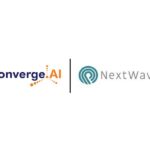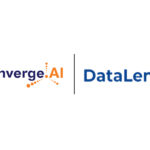
- By admin
- 0 comments
Five Critical Elements to Consider while
Planning an AI Project
Don’t Let an AI Project Fail you. This blog gives you essential tips for a successful AI journey.
Having a distinctively clear project scope is a crucial success factor for any project; cliche, as it may sound but well begun indeed, is half done. This rule applies to AI projects as well. After all, the management is funding the AI project to achieve specific goals, witness some measurable change, and see a positive business outcome. Therefore, AI project managers must clearly define and articulate what is expected and then deliver what is expected. This blog helps you with thumb rules to consider while getting started with your AI project.
Five Things to Focus on While Beginning an AI Project
1.Understanding the Project Scope
The first step in any project is to establish a high-level roadmap for the successful implementation and completion of your chosen tasks. Most traditional software development philosophies start with building an extremely detailed specification document, covering individual development tasks, and coming up with estimates for each. However, this approach requires a large upfront investment at the point in your project when you know the least. A better approach therefore is to go with the Agile philosophy. The agile framework lets you start with a lightweight project plan and will allow the project to grow and evolve without being hampered by prior decisions.
Having a distinctively clear project scope is a crucial success factor for any project; cliche, as it may sound but well begun indeed, is half done. This rule applies to AI projects as well. After all, the management is funding the AI project to achieve specific goals, witness some measurable change, and see a positive business outcome. Therefore, AI project managers must clearly define and articulate what is expected and then deliver what is expected. This blog helps you with thumb rules to consider while getting started with your AI project.
2. Data Curation and Governance
When building an intelligent system, there are two main components. The first is the collection of algorithms that build the machine learning models underlying the technology. The second is the data that is fed into these algorithms. The data becomes smarter as more information is collected about its contexts and interactions, providing specific intelligence for the system.
So, while building your own AI system, first identify data sources and gather all the data
necessary to build the system. In other words, find out where your organization’s data comes from and what’s already been collected. That information is called ground truth it’s the truth that underpins the knowledge in an AI system. Good ground truth typically comes from or is produced by organizational systems already in use.
For example, if a system tries to predict what genre of movies a user might like at a particular time of the day, that system’s ground truth can be pulled from the history of what users have selected to view throughout different time slots in the past week/month. This ground truth is genuine and representative of real users. After it is selected, it is this vital component on which you can train your AI system.
Remember, AI projects depend on data, and it is imperative to have a plan in place for collecting, storing, and managing data. So, an understanding of what type of data is needed, how it will be collected, and how it will be used to train the AI model is critical for the success of the AI project.
3. Prototyping
Once the project has been defined, you can start creating an AI prototype of the solution. An AI prototype enables the project stakeholders to provide early feedback and course corrections as needed.
Additionally, building an AI prototype forces a reality check on the project as a whole: The
prototype will necessarily be a vertical piece of functionality, testing that most elements of the technology stack work together. It is also pertinent to check if an existing solution is available here that will save and optimize resources.
4. Production
After the prototype has been validated, it is time to start building the rest of your AI system. Remember, when you construct an artificial intelligence prototype, you are actually training the system to perform. The data used in a prototype is almost always the same data used in the production build. However, additional data is often required to improve the representational quality of ground truth.
In some circumstances, the requirements of the model may have changed and constructing a new dataset will be required based on the results of the prototype. This change is best resolved at the prototype to the production transition period.
In addition, before your development team starts making the rest of the user stories, it is prudent to go through the existing user stories list to ensure that they are all still valid. There is always a fair possibility that time, priorities may have shifted, or you might have learned more from building prototypes.
5.Going on a loop: Having an AI Life Cycle with a Feedback loop
Once the AI system has been built, there is still a lot of work to be done. Just as with other
software, AI requires regular upkeep and maintenance. In addition, when working on AI projects, it is crucial to have a plan to improve and refine the model over time continuously. This may include regularly collecting and analyzing data, adjusting the model as needed, and keeping up with advancements in the field.
Conclusion
Artificial intelligence has the potential to transform all organizations. The process of this transformation varies, but it will broadly follow the steps we have listed in this blog. To get more information on implementing an AI project successfully, download our ebook on “Accelerate Your AI Product Journey“. The e-book shares insights and gives answers to your AI product development questions with examples that will enable you to implement AI technology with ease
Tags:
BlogRecent Blogs
- The AI-First GCC Model Redefining Enterprise Innovation in 2026
- From Data to Dialogue: Using AI to Co-Create Strategy
- How We Ensure Data Security in AI Projects at Konverge AI
- Modern Healthcare with AI: Leveraging EHR for Predictive Intelligence
- Nano Tips for Thriving in High-Pressure, Black Box Projects
- Quality Assurance in the Age of Generative AI
- Don’t Fall for the Commodity Trap: Why Custom AI Matters More Than Ever
Recent News
- Konverge AI Partners with NextWave to Set Up its Global Capability Center (GCC) in India
- Konverge AI Strengthens Ties with Microsoft, Listing DataLens on Azure Marketplace
- Konverge AI Moves from Challenger to Seasoned Vendor in AIM PeMa Quadrant for GenAI Services 2024
- Konverge AI Achieves ISO 27001, Strengthens Enterprise Data Security
- Konverge AI Join Forces with Dataiku to Accelerate and Scale AI Across Enterprises












